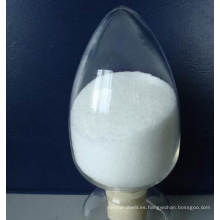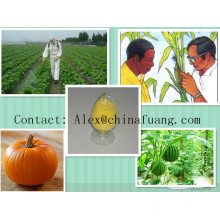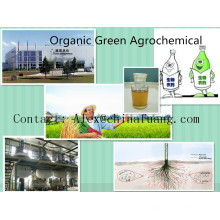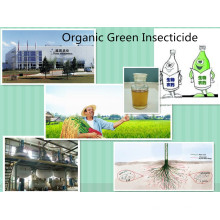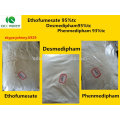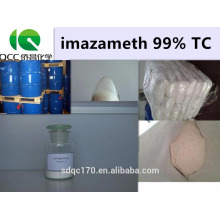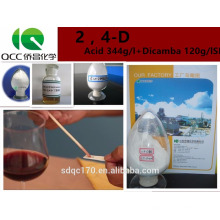Herbicida Ethofumesate 95% tc, Desmedipham95% tc, Phenmedipham 93% tc / agroquímico -lq
| Plazo de entrega: | 15 días |
|---|
| Paquete: | Bolsa de 25kg o tambor |
|---|---|
| Marca: | QCC |
| Lugar de origen: | Shandong, China (continente) |
Información básica
Modelo: TC
Descripción del producto
Common name |
ethofumesate |
Product category |
Herbicide |
Chemical name |
(?-2-ethoxy-2,3-dihydro-3,3-dimethylbenzofuran-5-yl methanesulfonate. |
CAS Number. |
26225-79-6 |
Molecular formula |
C13H18O5S |
appearance |
a light brown crystalline solidTC |
packing |
|
application |
Biochemistry Inhibits lipid synthesis (not ACCase inhibition). Mode of action Selective systemic herbicide, absorbed by the emerging shoots (grasses) and roots (broad-leaved plants), with translocation to the foliage. Not readily absorbed by leaves after the plant has generated a mature cuticle. Inhibits the growth of meristems, retards cellular division, and limits formation of waxy cuticle. Uses Used pre- and/or post-emergence in sugar and other beet crops, turf, ryegrass and the other pasture grasses, at 0.3-2.0 kg/ha. It is effective in controlling a wide range of important grasses and broad-leaved weeds, with a good persistence of activity in the soil. In beet crops, 1.0-2.0 kg/ha can be used, but ethofumesate is normally recommended at 0.2-2.0 kg/ha in tank-mixtures or co-formulations with other residual or contact herbicides for use in beet. A high degree of tolerance is also shown by strawberries, sunflowers, Phaseolus beans and tobacco, depending on the time of application. Phytotoxicity Onions, peas, beans, carrots, and cotton are tolerant to some extent. Formulation types EC; SC. |
Active ingredient | |
Common name: |
desmedipham (BSI, E-ISO, ANSI, WSSA); desmiphame ((m) F-ISO) |
Chemical name: |
ethyl [3-[[(phenylamino)carbonyl]oxy]phenyl]carbamate |
CAS No: |
13684-56-5 |
Molecular Formula: |
C16H16N2O4 |
|
Structural Formula:
|
<img src="http://i00.i.aliimg.com/img/pb/346/971/491/491971346_529.jpg" alt="Herbicide Desmedipham 95%Tech15%EC Agrochemical 13684-56-5" ori-width="182" ori-height="60">
|
Pesticide category: |
Herbicide |
Mode of Action: |
Selective systemic herbicide, absorbed through the leaves, with translocation primarily in the apoplast. |
Characteristics and Uses: |
Used post-emergence to control broad-leaved weeds, including Amaranthus retroflexus, in beet crops, in particular sugarbeet. Usually sprayed in combination with phenmedipham and ethofumesate. Desmedipham acts through the leaves only, and does not depend on soil type and humidity under normal growing conditions. Due to its wide safety margin to the crop, spraying is merely timed according to the development stage of the weeds, with optimum weed control when they are at the cotyledon stage. |
|
Toxicity:
|
Oral: Acute oral LD50 for rats >10 250, mice >5000 mg/kg. Skin and eye: Acute percutaneous LD50 for rabbits >4000 mg/kg. Not a skin sensitiser. Inhalation: LC50 (4 h) for rats >7.4 mg/l. |
Formulation | |
Product name: |
Desmedipham 95%Tech, 15%EC |
|
Specifications:
|
|
Packaging: |
25kg/cardboard drum or packing according to customers demand. |
Common name: |
phenmedipham (BSI, E-ISO, ANSI, WSSA, JMAF); phenmiphame ((m) F-ISO) |
Chemical name: |
3-[(methoxycarbonyl)amino]phenyl (3-methylphenyl)carbamate |
CAS No: |
13684-63-4 |
Molecular Formula: |
C16H16N2O4 |
|
Structural Formula:
|
<img src="http://i00.i.aliimg.com/img/pb/572/609/837/837609572_904.jpg" alt="Herbicides Phenmedipham 95%Tech, 16%EC, 13684-63-4" ori-width="229" ori-height="108"> |
Pesticide category: |
Herbicide |
Mode of Action: |
Selective systemic herbicide, absorbed through the leaves, with translocation primarily in the apoplast. |
Characteristics and Uses: |
Used post-emergence, at 1 kg/ha, in beet crops, especially sugar beet, after the emergence of most broad-leaved weeds and before they develop more than 2-4 true leaves; also used on strawberries, spinach, peas, mangold and red beet. |
|
Toxicity:
|
Oral: Acute oral LD50 for rats and mice >8000, guinea pigs and dogs >4000 mg/kg. Skin and eye: Acute percutaneous LD50 for rabbits 1000, rats 2500 mg/kg. Not a skin sensitiser. Inhalation: LC50 (4 h) for rats >7.0 mg/l. |
Embalaje y envío

Información de la empresa

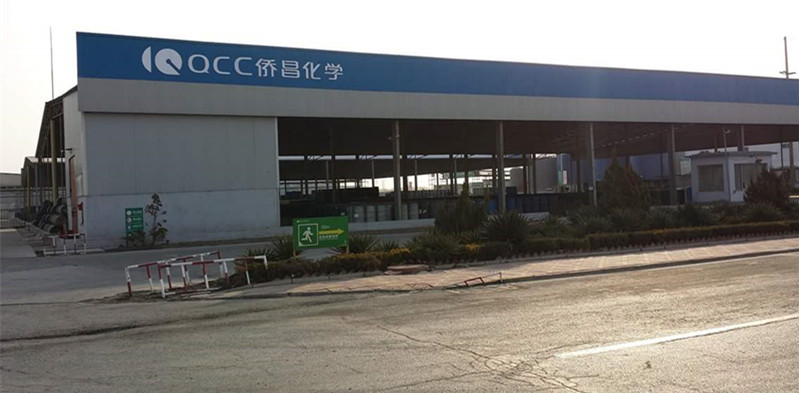

Johnny
Skype: johnny.li929
Whatsapp: 0086-18860550088
Correo electrónico: export25 AT qiaochang.com
Grupos de Producto : Serie de herbicidas > Herbicida agroquímico
Premium Related Products
